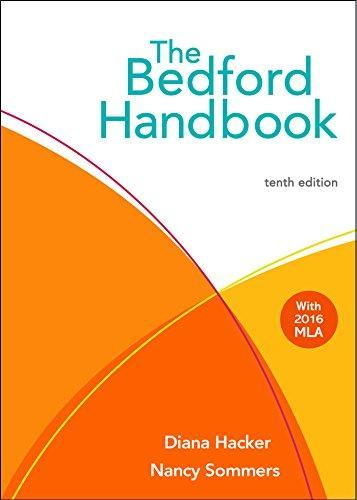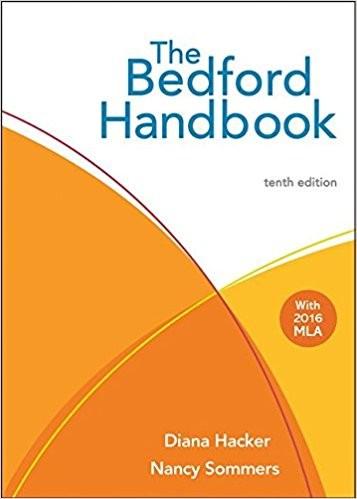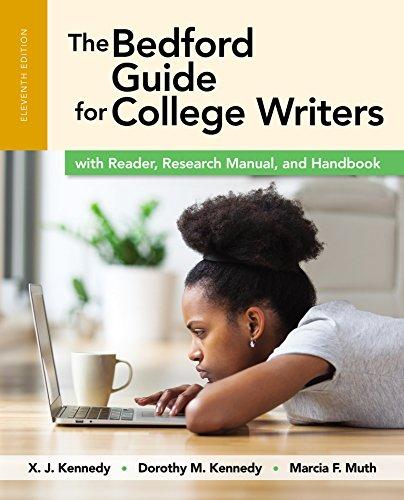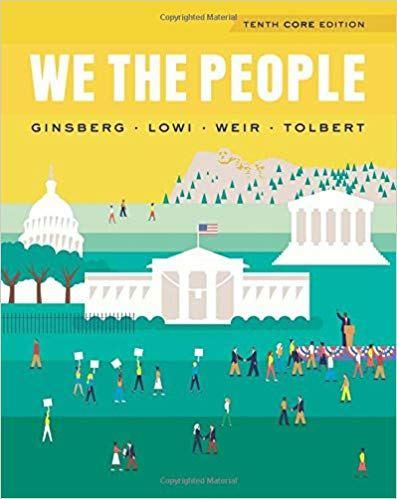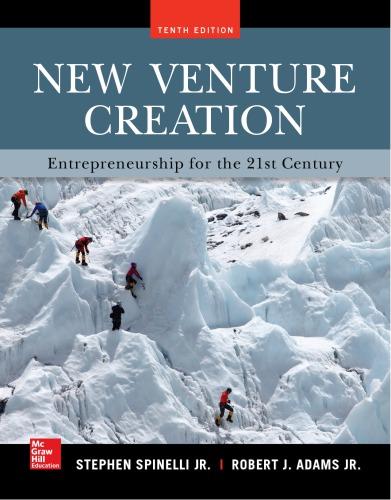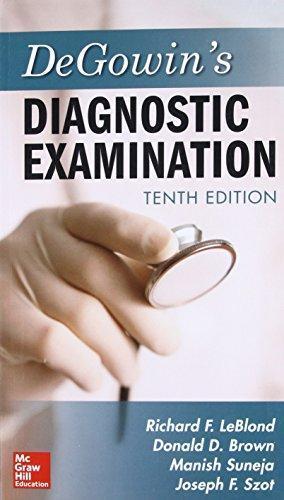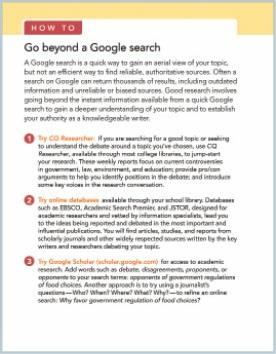PrefaceforInstructors
DearColleagues:
WelcometothetentheditionofTheBedfordHandbook.WhenyouassignTheBedfordHandbook, you send an important message to students: Writing is worth studying and practicing And you give students the resource to answer their writing questions and to learn from the answers. College writing is high stakes, after all. Students learn to become nurses and teachers, psychologists and criminal justice professionals through writing Foracademicsuccess,noskillismorecriticalthaneffectivewriting
As I worked on the new edition, I had the pleasure of finding answers to my own writing questions in a gracious and thoughtful group of editorial advisers (see p. xii), teachers of writing with many years of experience at two- and four-year schools and with many suggestions for smart ways to address the problems student writers have I wanted each new feature in the tenth edition to address the specific challenges our students face as college writers drafting and revising a thesis statement; reading critically; locating, evaluating,andcitingsources;makingsentence-leveldecisionsaboutgrammarandpunctuation andtogive studentspracticeinbuildingthesecoreskillstobecomeconfidentcollegewriters

As you page through the tenth edition, you’ll discover many new features inspired by my thirty years as a writing teacher and by the expert advice of our talented team of reviewers, teachers who use The Bedford Handbook in their classrooms and who urged us to make the handbook even more practical, “ more handy” Welistenedtoourreviewerswhoaskedformorehands-onpracticearoundtransferableskills,suchaswriting athesis,makinganargument,conductingresearch,andmore.Inthetenthedition,you’llfind20newwriting exercises to give students practice in developing core academic skills and applying handbook lessons; you’ll also find more than 350 assignable exercises and activities in LaunchPad Solo for Hacker Handbooks and in Writer’sHelp2.0,HackerVersion,thecompanionmedia.Iamespeciallyexcitedaboutournew“Howto”boxes that offer students step-by-step, practical instruction on essential skills such as drafting an argumentative thesis,decidingwhentoparaphraseorsummarizesources,andavoidingplagiarizingfromtheWeb
Thesenew“Howto”boxesofferstudentsstraightforwardsolutionstosomeofthebiggestchallengesthey
NancySommerswithstudentwriterMichelleNguyen PHOTOBYMARAWEIBLE
face as academic writers. My students report, for instance, that one of their major research challenges is locating authoritative sources beyond a quick Google search Google is fast, but it’s not efficient for academic research So in the tenth edition, we respond with the new “How to go beyond a Google search” box (see p 536)togivestudentsapracticalmethodforbecomingmoreefficientandeffectiveresearchers.
Just as we want our students to go beyond an unreliable, superficial online search to conduct academic research,wewanttheirwritinginstructiontobereliableandcomprehensive.Asearchoffreeonlinematerials might provide millions of results to students’ questions about thesis or citation practices, but we know that these results are often more confusing than illuminating and that this method is neither an efficient nor an effectivewaytolearnhowtodevelopathesisorcitesources.
In the tenth edition, you and your students will find new instruction on paraphrasing, guidelines for accurate citation of online sources (including MLA’s 2016 guidelines), and step-by-step guidance on giving peer review comments. You’ll also find practical “Writing guides” to help students write common assignments, such as an annotated bibliography, which many of you told me you assign. And you’ll find new “Writer’schoice”boxes,whichofferamorerhetoricalapproachtosentence-levelconcerns Allthefeaturesin the new edition are designed to answer your students’ questions and to help them solve their writing problems. By assigning the tenth edition of The Bedford Handbook, you guide students to read deeply, write clearly,andjoinongoingresearchconversationsascontributorsofideas
I am eager to share this handbook with you, knowing that in the new edition you’ll find everything you andyourstudentstrustandvalueaboutTheBedfordHandbook.
NancySommers
nancy sommers@harvardedu
What’snewinthisedition?
Thebestcollegewriterssucceedbecausetheypracticewriting,reading,thinking,andresearchingonaregular basis The Bedford Handbook, Tenth Edition, fosters a culture of practice and is our most practical handbook ever.
Step-by-step instruction will help your students apply writing advice in practical ways and transfer skills to differentkindsofwritingassignments Morethanadozennew“Howto”boxesofferthestraightforwardhelp thatinstructorsandstudentswant
▸ Howtosolvefivecommonproblemswiththesisstatements
▸ Howtowritehelpfulpeerreviewcomments
▸ Howtoimproveyourwritingwithaneditinglog
▸ Howtodraftananalyticalthesisstatement
▸ Howtowriteasummaryofamultimodaltext
▸ Howtodraftathesisstatementforanargument
▸ Howtoenteraresearchconversation
▸ HowtogobeyondaGooglesearch
▸ HowtoavoidplagiarizingfromtheWeb
▸ Howtobearesponsibleresearchwriter
▸ Howtoanswerthebasicquestion“Whoistheauthor?”
▸ Howtociteasourcerepostedfromanothersource
▸ Howtocitecoursematerials
Moreexercisesandactivities in a wide variety of formats give students more practice opportunities than ever before
Theprintbookfeaturesmoreexercisesinthenewedition,includingwritingandgrammarexercisesthat requirerhetoricalthinking,researchexercisesthataskstudentstopracticeparaphrasingandsummarizing, andwritingpromptsthatencouragestudentstoapplyhandbookadvicetotheirownwriting.
LaunchPadSoloforHackerHandbooksandWriter’sHelp2.0,HackerVersion yourtwochoicesfor companionmedia include300exercises(mostautoscored),LearningCurveadaptivequizzes,and writingprompts
New “Writer’s choice” boxes on grammar and style topics offer opportunities for students to practice critical
thinking at the sentence level. A new rhetorical approach to grammar coverage makes this content more teachable by giving instructors flexibility a way to individualize instruction for students who may need morethanaconventionalexplanationoftherules.
Newemphasisonpeerreview allows students to practice the skills they need to collaborate in college writing environmentsandbeyond
ThoroughlyrevisedcontentinChapter2illustratesbestpracticesforpeerreview
“Writingpractice”activitiesthroughoutthebookask studentstocollaborate,providefeedback,andreflectonfeedbackthey’vereceived
The 2016 MLA guidelines inform all of our MLA coverage, and our revision ensures that you and your students have the most up-to-date advice and models and that your students have ample instruction for conducting responsible research. Two new sample research essays, one in MLA style and one in APA style, modelproperformattingandeffectivewritingfromsources
Newadviceforpublicspeaking/oralpresentationpreparesstudentstospeakconfidentlyinacademicsettingsand tolookaheadtoprofessionalandeverydaysituationsthatcallfororalcommunication.Seepage166).
ForeWordsforEnglishmakescustomizingyourhandbookeasy
Prebuiltcontentmodules(12–16pageseach)onavarietyoftopicsallowyoutocreatethehandbookthat meetstheneedsofyouandyourstudents Choosefrommodulesontimemanagement,CSEstyle, businesswriting,usingsentencetemplatesforacademicwriting,andmore
Youcanalsodefineyourprogramandcommunicateyourpolicieswithbrief,original,school-specific contentsuchasgoalsofthewritingprogram,locationandhoursofthewritingcenter,common syllabus/assignments,andsoon.
Visitmacmillanlearning.com/forewords/compositionortalktoyourpublisher’srepresentative.
Whathasn’tchanged?
Thehandbookcoversalotofground.EvenGooglecan’tgivestudentstheconfidencethatcomeswitha coherentreferencethatcoversallthetopicstheyneedinawritingcourse.TheBedfordHandbooksupports studentsastheycomposefordifferentpurposesandaudiencesandinavarietyofgenres,asthey collaborate,reviseandedit,conductresearch,documentsources,andformattheirwriting
It’seasytouse,easytounderstand Thehandbook’sexplanationsarebrief,accessible,andillustratedby examples Thebook’smanyboxes,charts,checklists,andmenusaredesignedtohelpusersfindwhatthey needquickly.
Thehandbookprovidesauthoritative,trustworthyinstruction.MostwritingresourcesontheWeboffer information,buttheydon’tofferinstruction WiththetentheditionofTheBedfordHandbook,students havereferencecontentthathasbeenclass-testedbyhundredsofthousandsofstudentsandinstructors
ThehandbookadoptionincludestheserviceandsupportyouhavecometoexpectfromBedford/St Martin’s Weprovideprofessionalresources,professionaldevelopmentworkshops,trainingfordigital tools,andquick,personalservicewhenyouneedit.
Acknowledgments
I am grateful for the expertise, enthusiasm, and classroom experience that so many individuals brought to the tenthedition
Reviewers
Nora Bacon, University of Nebraska; Garrison Bickerstaff, University of Georgia; Megan Boeshart, Texas State University; Brooke Bovee, Miami Dade College; Steve Brahlek, Palm Beach State College; Edward Coursey, Hillsborough Community College; Pamela Fletcher, St Catherine University; Edward Glenn, Miami Dade College; Wanda Grimes, Volunteer State Community College; Kay Grossberg, Volunteer State Community College; David Holper, College of the Redwoods; Edmund Jones, Seton Hall University; Matthew Klauza, Palm Beach State College; Matthew Kretchmar, Denison University; Rebecca Mills, California State Polytechnic University; Luis Nazario, Pueblo Community College; Stephanie Noll, Texas State University; Susan North, University of Tennessee at Chattanooga; Annemarie Oldfield, Eastern New Mexico University; Tara O’Neill-Knasick, Hudson Valley Community College; Matthew Sagorski, Miami Dade College; James Suderman, Northwest Florida State College; Tom Treffinger, Greenville Technical College
Editorialadvisers
I was thrilled to have the help of the following fellow teachers of writing in shaping a new edition that respondstostudents’needs,savesteacherstime,andreflectscurrentpedagogy.
CynthiaChanin,VolunteerStateCommunityCollege
ReginaDilgen,PalmBeachStateCollege
LauraEllis-Lai,TexasStateUniversity
JanGeyer,HudsonValleyCommunityCollege
ShonetteGrant,NorthernVirginiaCommunityCollege
MickeyHall,VolunteerStateCommunityCollege
MelodyHargraves,St.JohnsRiverStateCollege
BillLeach,FloridaInstituteofTechnology
LanieLundgrin,UniversityofTennesseeatChattanooga
AlexandraMason,MiamiDadeCollege
LorenMitchell,UniversityofHawaii
TiffanyMitchell,UniversityofTennesseeatChattanooga
JeannineMorgan,St.JohnsRiverStateCollege
LisaShaw,MiamiDadeCollege
RossWagner,GreenvilleTechnicalCollege
NancyWilson,TexasStateUniversity
Contributors
I thank the following fellow teachers for smart revisions of important content: Kimberli Huster, ESL specialist at Robert Morris University, updated the advice for multilingual writers, and Sara McCurry, instructor of English at Shasta College, coauthored the new edition of Teaching with Hacker Handbooks with Jonathan Cullick, professor of English at Northern Kentucky University. I also thank Robert Koch, director of the Center for Writing Excellence at the University of North Alabama, for drafting content for the new “Writer’schoice”rhetoricalgrammarboxes
Studentcontributors
Includingsamplestudentwritingineacheditionofthehandbookanditsmediamakestheresourcesusefulfor you and your students I would like to thank these students for letting us adapt their work as models: Ned Bishop,SophieHarba,SamJacobs,MichelleNguyen,EmiliaSanchez,AprilBoWang,andRenYoshida Bedford/St.Martin’s
A comprehensive handbook is a collaborative writing project, and it is my pleasure to acknowledge and thank the enormously talented Bedford/St Martin’s editorial team, whose focus on students informs each new featureofTheBedfordHandbook.EdwinHill,vicepresidentforhumanitieseditorial,andLeasaBurton,senior publisherforcomposition,offertheircommitmenttoanddeepknowledgeofthefieldofcompositionandthe waysinwhichitischanging KarenHenry,editorialdirectorforEnglish,hashelpedshapethebook’sidentity andhasguideduswithinsightsabouthowtocontinuetomeettheneedsofthecollegewriter.
Michelle Clark, executive editor, is the editor every author dreams of having a treasured friend and colleague and an endless source of creativity and clarity Michelle combines wisdom with patience, imagination with practicality, and hard work with good cheer. Barbara Flanagan, senior media editor, brings unrivaled expertise in documentation mastering the 2016 MLA update and organizes our media content Mara Weible, senior editor, brings to the tenth edition her teacher’s sensibility; I thank her for working with student writer April Wang on a new APA-style research essay. Thanks to Stephanie Thomas, assistant editor, for expertly managing the review and permissions processes and for developing Teaching with Hacker Handbooks and other key supplements And many thanks to Allison Hart, senior media producer, for
deliveringengaginghandbooktoolsforstudentsinthedigitalage.
Practical advice from Bedford colleagues Emily Rowin, Joy Fisher Williams, Jimmy Fleming, Nick Carbone, Karita dos Santos, Brendan Baruth, and Harriet Wald all of whom, like me, spend many hours on the road and in faculty offices is always treasured. Many thanks to Gregory Erb, senior production editor, who keeps us on schedule and expertly manages the design and composition processes And thanks to Linda McLatchie, copyeditor, for her thoroughness and attention to detail; to Claire Seng-Niemoeller, text designer, who crafted a clean and more accessible tenth edition of the book; and to John Callahan, designer, whohasgiventhebookastrikinglybeautifulcover
Last, but never least, I offer thanks to my own students who, over many years, have shaped my teaching and helped me understand their challenges in becoming college writers. Thanks to my friends and colleagues SuzanneLane,MaxineRodburg,LauraSaltz,andKerryWalkforsustainingconversationsabouttheteaching of writing. And thanks to my family: to Joshua Alper, an attentive reader of life and literature, for his steadfastness across the drafts; to my parents, Walter and Louise Sommers, who encouraged me to write and set me forth on a career of writing and teaching; to my extended family, Ron, Charles Mary, Alexander, Demian,Devin,Liz,Kate,Sam,Terry,Steve,andYuval,fortheirgoodhumorandgoodcheer;andtoRachel andCurran,AlexandraandBrian,wittyandwisebeyondmeasure,alwaysgenerouswiththeirinstructionand inspiration in all things that matter And to Lailah Dragonfly, my granddaughter, thanks for the joy and sweetnessyoubringtolife
NancySommers
Contents
PREFACEFORINSTRUCTORS
Introduction:WhyGoodHabitsMatter
Becomingacollegewriter:Choosetopicsyoucareabout
PARTI TheWritingProcess
ONLINEACTIVITIES
1 Exploring,planning,anddrafting
a Assessingthewritingsituation
b Exploringyoursubject
c Draftingandrevisingaworkingthesis
Howtosolvefivecommonproblemswiththesisstatements
d Draftingaplan
e Draftinganintroduction
f Draftingthebody
g Draftingaconclusion
h Managingyourfiles
2 Revising,editing,andreflecting
a Seeingrevisionasasocialprocess
b Usingpeerreview;revisingwithcomments
Becomingacollegewriter:Formacommunityofreadersaroundyou
c Usingpeerreview;givingconstructivecomments
Howtowritehelpfulpeerreviewcomments
d Highlightsofonestudent’speerreviewprocess
e Approachingglobalrevisionincycles
f Revisingandeditingsentences
g Proofreadingthefinalmanuscript
Howtoimproveyourwritingwithaneditinglog
h Samplestudentrevision:Literacynarrative
i Preparingaportfolio;reflectingonyourwriting
Writingguide:Howtowritealiteracynarrative
Writingguide:Howtowriteareflectiveletter
3 Buildingeffectiveparagraphs
a Focusingonamainpoint
b Developingthemainpoint
c Choosingasuitablepatternoforganization
d Makingparagraphscoherent
e Adjustingparagraphlength
PARTII AcademicReadingandWriting ONLINEACTIVITIES
4 Readingandwritingcritically
a Readingactively
Becomingacollegewriter:Engagewiththetextsyouread
b Outliningatexttoidentifymainideas
c Summarizingtodeepenyourunderstanding
d Analyzingtodemonstrateyourcriticalreading
Howtodraftananalyticalthesisstatement
Writingguide:Howtowriteananalyticalessay
e Samplestudentwriting:Analysisofanarticle
5 Readingandwritingaboutmultimodaltexts
a Readingactively
b Outliningtoidentifymainideas
c Summarizingtodeepenyourunderstanding
Howtowriteasummaryofamultimodaltext
d Analyzingtodemonstrateyourcriticalreading
e Samplestudentwriting:Analysisofanadvertisement
6 Readingandwritingarguments
a Distinguishingbetweenreasonableandfallaciousargumentativetactics
Becomingacollegewriter:Considercounterarguments
b Distinguishingbetweenlegitimateandunfairemotionalappeals
c Judginghowfairlyawriterhandlesopposingviews
d Identifyingyourpurposeandcontext
e Viewingyouraudienceasapanelofjurors
f Establishingcredibilityandstatingyourposition
g Backingupyourthesiswithpersuasivelinesofargument
Howtodraftathesisstatementforanargument
h Supportingyourclaimswithspecificevidence
i Anticipatingobjections;counteringopposingarguments
j Buildingcommonground
k Samplestudentwriting:Argument
Writingguide:Howtowriteanargumentessay
l Remixingawrittenargumentforanoralpresentation
7 Readingandwritingaboutliterature
a Readingactively
b Forminganinterpretation
c Draftingaworkingthesis
d Usingevidencefromthetext;avoidingplotsummary
e Observingtheconventionsofliteraturepapers
f Integratingquotationsfromthetext
g Documentingsecondarysourcesandavoidingplagiarism
h Samplestudentwriting:Literaryanalysis
PARTIII ClearSentences
ONLINEACTIVITIES
8 Preferactiveverbs
a Activeversuspassiveverbs
b Activeversusbeverbs
Writer’schoice:Usingtheactiveorthepassivevoice
c Subjectthatnamestheactor
9 Balanceparallelideas
a Parallelideasinaseries
b Parallelideaspresentedaspairs
c Repetitionoffunctionwords
10 Addneededwords
a Incompoundstructures
b that
c Incomparisons
d a,an,andthe
11 Untanglemixedconstructions.
a Mixedgrammar
b Illogicalconnections
c iswhen,iswhere,andreason isbecause
12 Repairmisplacedanddanglingmodifiers.
a Limitingmodifiers
b Misplacedphrasesandclauses
c Awkwardlyplacedmodifiers
d Splitinfinitives
e Danglingmodifiers
13 Eliminatedistractingshifts
a Pointofview(person,number)
Writer’schoice:Choosingapointofview
b Verbtense
c Verbmood,voice
d Indirecttodirectquestionsorquotations
14 Emphasizekeyideas.
a Coordinationandsubordination
b Choppysentences
Writer’schoice:Positioningmajorandminorideas
c Ineffectiveorexcessivecoordination
d Ineffectivesubordination
e Excessivesubordination
f Othertechniques
15 Providesomevariety
a Sentenceopenings
Writer’schoice:Strengtheningwithvariety
b Sentencestructures
c Invertedorder
d Question
ONLINEACTIVITIES
16 Tightenwordysentences.
a Redundancies
b Unnecessaryrepetition
c Emptyorinflatedphrases
d Simplifyingthestructure
e Reducingclausestophrases,phrasestosinglewords
17 Chooseappropriatelanguage
a Jargon
Writer’schoice:Usingdiscipline-specificterms
b Pretentiouslanguage,euphemisms,“doublespeak”
c Obsoleteandinventedwords
d Slang,regionalexpressions,nonstandardEnglish
e Levelsofformality
f Sexistlanguage
g Offensivelanguage
18 Findtheexactwords.
a Connotations
b Specific,concretenouns
c Misusedwords
d Standardidioms
e Clichés
f Figuresofspeech
PARTV GrammaticalSentences
ONLINEACTIVITIES
19 Repairsentencefragments
a Subordinateclauses
b Phrases
c Otherfragmentedwordgroups
d Acceptablefragments
20 Reviserun-onsentences
a Revisionwithcoordinatingconjunction
Writer’schoice:Clusteringideasinmeaningfulways
b Revisionwithsemicolon,colon,ordash
c Revisionbyseparatingsentences
d Revisionbyrestructuring
21 Makesubjectsandverbsagree
a Standardsubject-verbcombinations
b Wordsbetweensubjectandverb
c Subjectsjoinedwithand
d Subjectsjoinedwithor,nor,either or,orneither nor
e Indefinitepronouns
f Collectivenouns
g Subjectfollowingverb
h Subject,notsubjectcomplement
i who,which,andthat
j Wordswithpluralform,singularmeaning
k Titlesofworks,companynames,wordsmentionedaswords,gerundphrases
22 Makepronounsandantecedentsagree.
a Singularwithsingular,pluralwithplural(indefinitepronouns,genericnouns)
b Collectivenouns
c Antecedentsjoinedwithand
d Antecedentsjoinedwithor,nor,either or,orneither nor
23 Makepronounreferencesclear
a Ambiguousorremotereference
b Broadreferenceofthis,that,which,andit
c Impliedantecedents
d Indefiniteuseofthey,it,andyou
e whoforpersons,whichorthatforthings
24 DistinguishbetweenpronounssuchasIandme.
a Subjectivecaseforsubjectsandsubjectcomplements
b Objectivecaseforobjects
c Appositives
d Pronounfollowingthanoras
e weorusbeforeanoun
f Subjectsandobjectsofinfinitives
g Pronounmodifyingagerund
25 Distinguishbetweenwhoandwhom
a Insubordinateclauses
b Inquestions
c Assubjectsorobjectsofinfinitives
26 Chooseadjectivesandadverbswithcare
a Adjectivestomodifynouns
b Adverbstomodifyverbs,adjectives,andotheradverbs
c goodandwell,badandbadly
d Comparativesandsuperlatives
e Doublenegatives
27 Chooseappropriateverbforms,tenses,andmoodsinStandardEnglish.
a Irregularverbs
b lieandlay
c -s(or-es)endings
d -edendings
e Omittedverbs
f Verbtense
g Subjunctivemood
PARTVI MultilingualWritersandESLChallenges ONLINEACTIVITIES
28 Verbs
a Appropriateformandtense
b Passivevoice
c Baseformafteramodal
d Negativeverbforms
e Verbsinconditionalsentences
f Verbsfollowedbygerundsorinfinitives
29 Articles(a,an,the)
a Articlesandothernounmarkers
b Whentousethe
c Whentouseaoran
d Whennottouseaoran
e Noarticleswithgeneralnouns
f Articleswithpropernouns
30 Sentencestructure
a Linkingverbbetweenasubjectanditscomplement
b Asubjectineverysentence
c Repeatednounsorpronounswiththesamegrammaticalfunction
d Repeatedsubjects,objects,adverbsinadjectiveclauses
e Mixedconstructionswithalthoughorbecause
f Placementofadverbs
g Presentparticiplesandpastparticiples
h Orderofcumulativeadjectives
31 Prepositionsandidiomaticexpressions
a Prepositionsshowingtimeandplace
b Noun(including-ingform)afterapreposition
c Commonadjective+prepositioncombinations
d Commonverb+prepositioncombinations
PARTVII Punctuation
ONLINEACTIVITIES
32 Thecomma
a Independentclausesjoinedwithand,but,etc
b Introductoryclausesorphrases
c Itemsinaseries
d Coordinateadjectives
e Nonrestrictiveelements
f Transitions,parentheticalexpressions,absolutephrases,contrasts
g Directaddress,yesandno,interrogativetags,interjections
h hesaidetc.
i Dates,addresses,titles,numbers
33 Unnecessarycommas
a Betweentwowords,phrases,orsubordinateclauses
b Betweenaverbanditssubjectorobject
c Beforethefirstorafterthelastiteminaseries
d Betweencumulativeadjectives,anadjectiveandanoun,oranadverbandanadjective
e Beforeandafterrestrictiveelements
f Beforeessentialconcludingadverbialelements
g Afteraphrasebeginninganinvertedsentence
h Othermisuses
34 Thesemicolon
a Independentclausesnotjoinedwithacoordinatingconjunction
b Independentclauseslinkedwithatransitionalexpression
c Seriescontaininginternalpunctuation
d Misuses
35 Thecolon
a Beforealist,anappositive,aquotation,orasummary
b Conventionaluses
c Misuses
36 Theapostrophe
a Possessivenouns
b Possessiveindefinitepronouns
c Contractions
d Notforpluralnumbers,letters,abbreviations,wordsaswords
e Misuses
37 Quotationmarks
a Directquotations
b Quotationwithinaquotation
c Titlesofshortworks
d Wordsaswords
e Withotherpunctuationmarks
f Misuses
38 Endpunctuation
a Theperiod
b Thequestionmark
c Theexclamationpoint
39 Otherpunctuationmarks
a Dash
b Parentheses
c Brackets
d Ellipsismark
e Slash
PARTVIII Mechanics
ONLINEACTIVITIES
40 Abbreviations
a Titleswithpropernames
b Familiarabbreviations
c Conventionalabbreviations
d Unitsofmeasurement
e Latinabbreviations
f Pluralofabbreviations
g Misuses
41 Numbers
a Spellingout
b Usingnumerals
42 Italics
a Titlesofworks
b Namesofships,spacecraft,andaircraft
c Foreignwords
d Wordsaswords,lettersasletters,andnumbersasnumbers
43 Spelling
a Spellingrules
b Thedictionary
c Wordsthatsoundalike
d Commonlymisspelledwords
44 Thehyphen
a Compoundwords
b Hyphenatedadjectives
c Fractionsandcompoundnumbers
d Withcertainprefixesandsuffixes
e Toavoidambiguityortoseparateawkwarddoubleortripleletters
f Worddivision
45 Capitalization
a Properversuscommonnouns
b Titleswithpropernames
c Titlesandsubtitlesofworks
d Firstwordofasentence
e Firstwordofaquotedsentence
f Firstwordafteracolon
PARTIX GrammarBasics ONLINEACTIVITIES
46 Partsofspeech
a Nouns
b Pronouns
c Verbs
d Adjectives
e Adverbs
f Prepositions
g Conjunctions
h Interjections
47 Sentencepatterns
a Subjects
b Verbs,objects,andcomplements
c Patternvariations
48 Subordinatewordgroups
a Prepositionalphrases
b Verbalphrases
c Appositivephrases
d Absolutephrases
e Subordinateclauses
Writer’schoice:Buildingcredibilitywithappositives
49 Sentencetypes
a Sentencestructures
b Sentencepurposes
PARTX ResearchedWriting ONLINEACTIVITIES
50 Thinkinglikearesearcher;gatheringsources
a Managingtheproject
Becomingacollegewriter:Joinaresearchconversation
b Posingquestionsworthexploring
Howtoenteraresearchconversation
c Mappingoutasearchstrategy
d Searchingefficiently;masteringafewshortcuts
HowtogobeyondaGooglesearch
e Conductingfieldresearch,ifappropriate
f Writingaresearchproposal
51 Managinginformation;takingnotesresponsibly
a Maintainingaworkingbibliography
b Keepingtrackofsourcematerials
c Avoidingunintentionalplagiarism
HowtoavoidplagiarizingfromtheWeb
52 Evaluatingsources
a Thinkingabouthowsourcesmightcontributetoyourwriting
b Selectingsourcesworthyourtimeandattention
c Selectingappropriateversionsofonlinesources
d Readingwithanopenmindandacriticaleye
e AssessingWebsourceswithcare
f Constructinganannotatedbibliography
Writingguide:Howtowriteanannotatedbibliography
